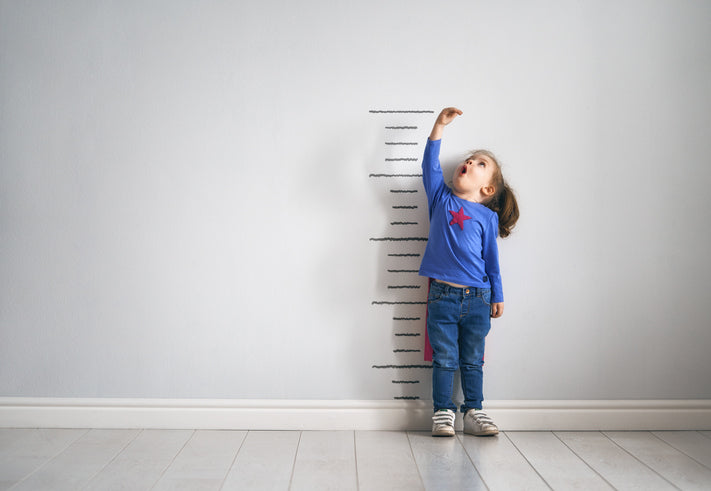Everything A Parent Needs to Know About Growing Pains

Growing pains have absolutely nothing to do with growing - at least that what scientists say. However, parents (and many pediatricians) beg to differ.
Let’s break down everything known about growing pains.
It has been found that up to 40% of children will experience these pains between ages 3 and 12.
A throbbing or sharp pain typically occurs in the legs (thighs, knees, calves, and feet) but may be felt in the arms as well. It begins in the evenings or wakes a child at night and may cause intense emotional reactions. It tends to be worse after an overactive day of sports or running.
Growing pains are bilateral. That means that they will not exist on only one side of the body. If the right foot hurts, the left foot is sure to follow. It may not be at the same time, but it will be within a few days.
How to Help
Parents are given few to no options for treatment. In the moment, massaging may be the only immediate form of comfort.
Other Options You Can Try:
Arnica gel and pellets: Arnica Montana, a plant native to mountainous areas of Europe and North America, has been used for centuries to treat a variety of pain. Research shows that arnica works as well as ibuprofen.
Chiropractic Care: Improving the alignment and mobility of the joints of the pelvis and lower extremities can eliminate these pains. Research shows that Spinal manipulative therapy (SMT) has been an effective way to eliminate growing pains!
Vitamin D: A recent study found that only 6% of children who suffered from growing pains had adequate levels of vitamin D. Another study examined the relationship of supplementing affected children with Vitamin D over a three month timeframe. Amazingly, the pain resolved completely in most of the children, while others experienced a significant reduction in symptoms.
Vitamin B6: According to the Weston A. Price Foundation, growing pains may be a sign of Vitamin B deficiency.
Diet Changes: An anti-inflammatory diet, or more specifically, finding your child’s trigger foods, may end the pains. The gut is linked to the brain, the skin, the nervous system, etc. Inflammatory foods such as dairy and gluten, as well as anything processed or containing chemicals should be avoided.
Regular Stretching: A small study found that regular stretching appeases growing pains. Stretching the quadriceps, hamstrings and calves every morning and evening for 10 minutes eliminated reoccurring pains.
Magnesium Lotion: The skin is the largest organ and will absorb anything placed on it. Magnesium has amazing powers and a soothing lotion version rubbed over the legs may prevent the pain.
Epsom Salt Bath: The magnesium found in Epsom salt mixed with warm water will soak into the skin and replenish a slight magnesium deficiency that could be linked to the night time pains.
When Is It NOT Growing Pains?
It is important to note that ‘Growing Pains’ typically do not suddenly appear at age 8, 9, or 10, but rather they exist from a younger age and may continue through age 12. If pains suddenly occur at these later ages, it may not be growing pains.
Talk to your doctor if:
- Pain is occurring in the joints
- Pain worsens when touched
- Pain is worse in the morning
- Pain interferes with activities
- Pain is associated with an injury
- Pain is accompanied by fever, rash, weakness, redness, swelling, limping, loss of appetite, or fatigue.
Resources: http://www.ncbi.nlm.nih.gov/pubmed/17318618?ordinalpos=1&itool=EntrezSystem2.PEntrez.Pubmed.Pubmed_ResultsPanel.Pubmed_DefaultReportPanel.Pubmed_RVDocSum+++&version=meter+at+2&module=meter-Links&pgtype=Blogs&contentId=&mediaId=%25%25ADID%25%25&referrer=https%3A%2F%2Fwww.bing.com%2F&priority=true&action=click&contentCollection=meter-links-click http://www.ncbi.nlm.nih.gov/pubmed/15283013 http://www.ncbi.nlm.nih.gov/pubmed/19039913 http://www.ncbi.nlm.nih.gov/pmc/articles/PMC2553776/ http://www.ncbi.nlm.nih.gov/pubmed/20171654 http://www.ncbi.nlm.nih.gov/pubmed/21168111 http://www.westonaprice.org/health-topics/metals-and-the-mind/






